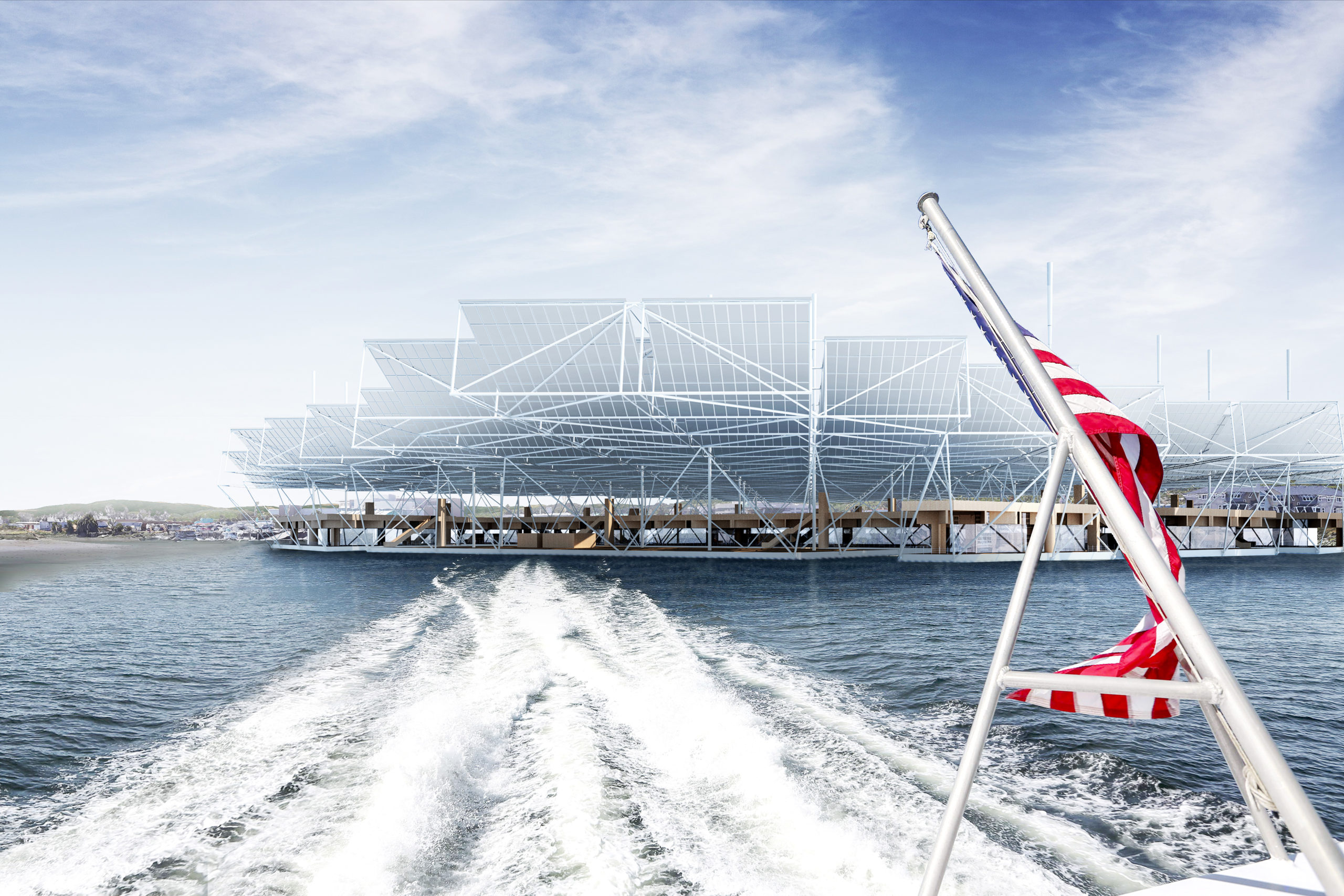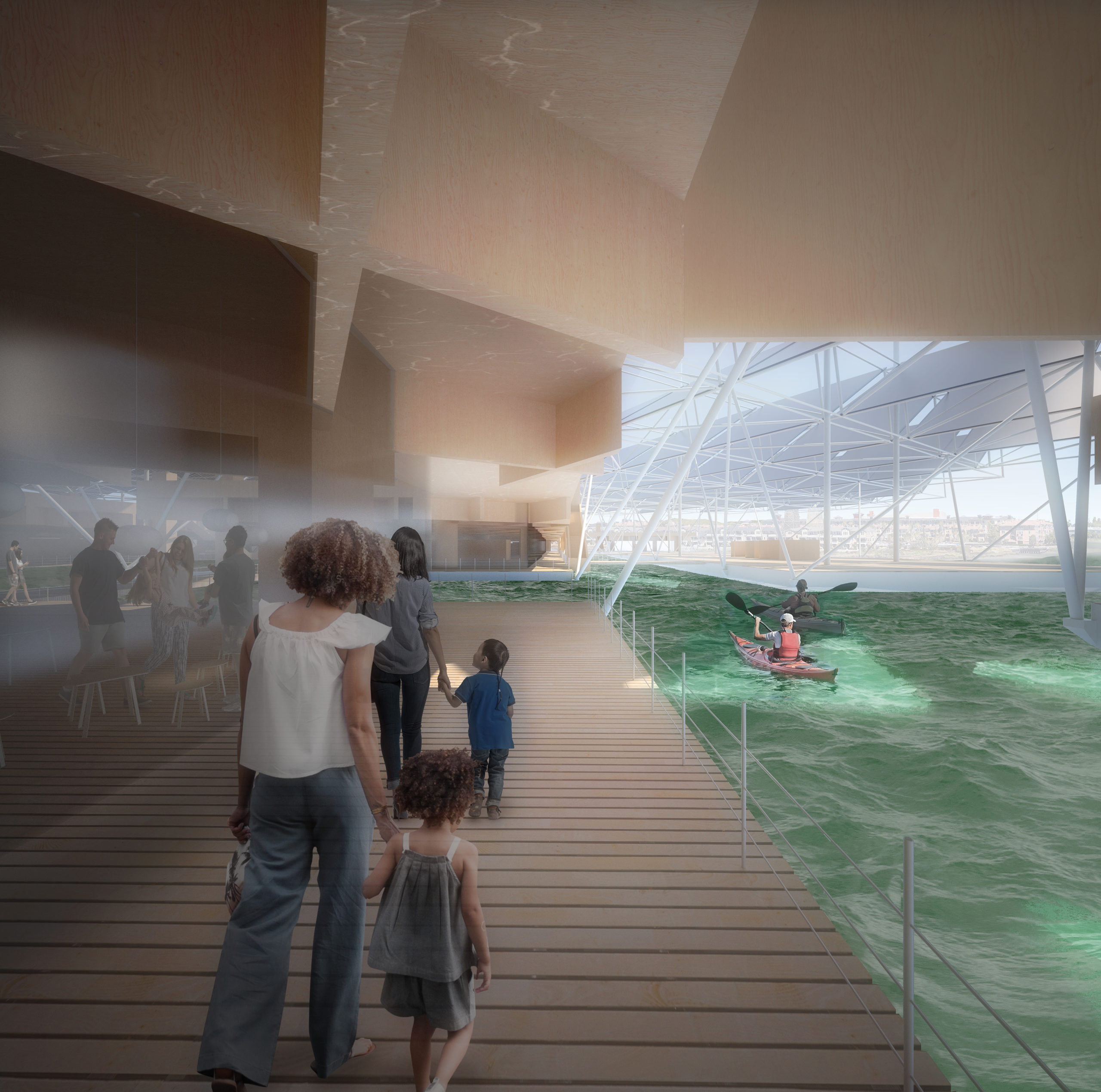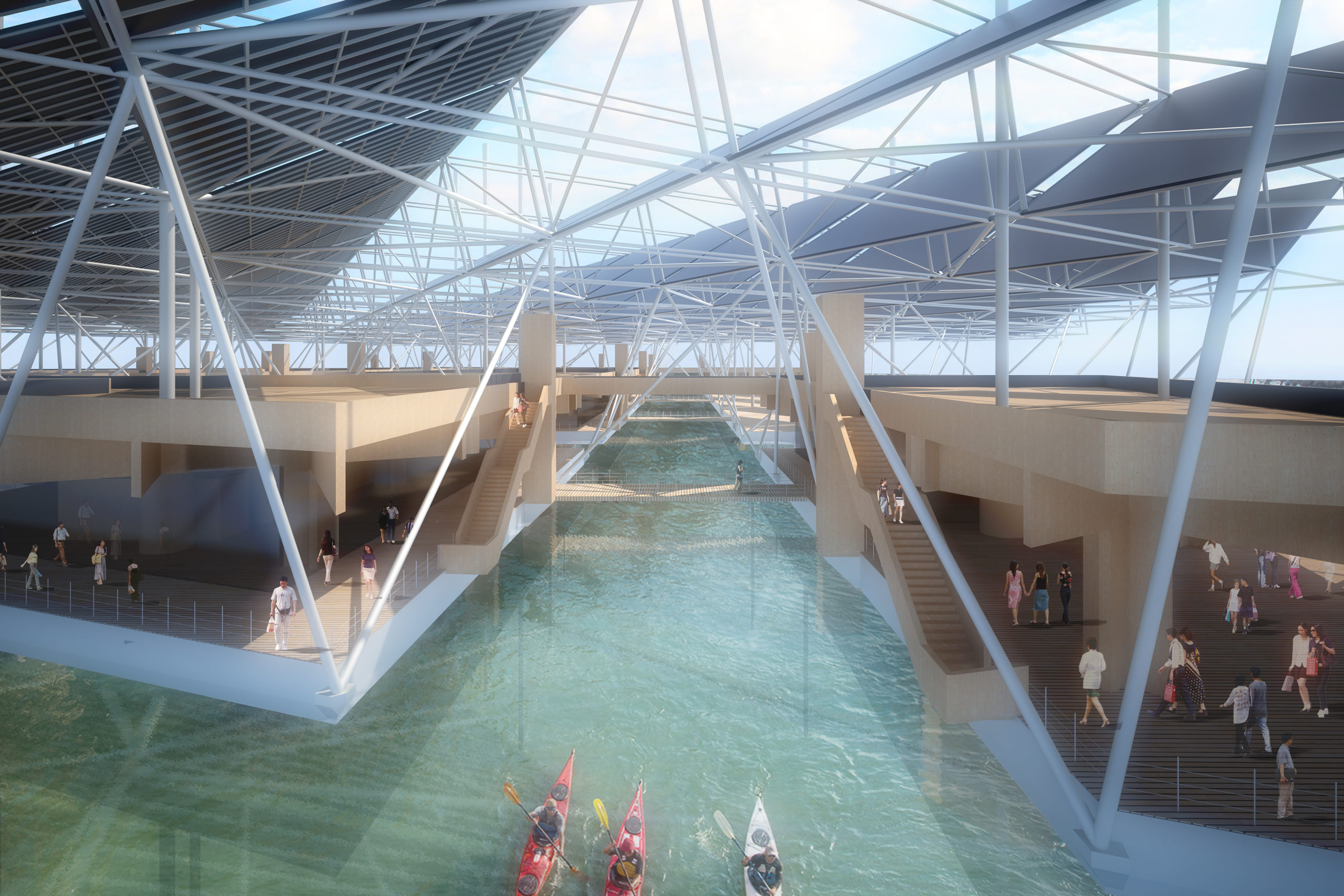BAST: Bay Area Solar Transit-Hub Proposal for a New Zero Energy Ferry Transit-Hub in Redwood City
Master Thesis by: Jang Ock Kim – M.Arch / Thesis Advisor: Mark Mueckenheim
This thesis is a proposal for a new Bay Area Solar Transit-hub (BAST), a zero-energy ferry transit center in Redwood City. While BAST seeks to alleviate the notorious Bay Area traffic congestion issue by providing an efficient electric ferry service, it is ultimately a prototype for a sustainable waterway public transit system network that can be expanded throughout the Bay Area and other cities around the world that have effective waterway networks.

Connecting People to a Coastal Landscape
The Bay Area is known for its unique ecosystem, especially prominent along its rich coastal landscape. Recognized as one of the most ecologically important habitats in California, the Bay has been regulated and protected for several decades. It supports a number of endangered and threatened species, making it a unique contributor to the safeguarding of biodiversity.
Many communities, however, are disconnected from the Bay. Physical barriers, such as freeways and other infrastructure, make this landscape inaccessible. This architecture proposal revitalizes the overlooked waterfront of Redwood City by providing services and spaces for people to participate in the unique coastal ecosystem of the Bay.
Transportation Infrastructure
In the late 1800s the Bay’s transit systems played a large role, combining various transportation routes and methods, from ferry to railroad systems. The importance of ferries declined rapidly with the completion of the Golden Gate Bridge and the Bay Bridge.
With the Bay Area’s continued economic growth and its popularity among city dwellers, the stress on transportation infrastructure has been escalating. The Bay Area’s current commuter traffic condition ranks as one of the worst in the nation, and this project aims to address this important issue directly by reviving the region’s previous innovation in ferry transportation.
Adapting to a Changing Climate
The project serves as an access point to surrounding communities, bringing neighborhoods that were historically disconnected closer to each other through sustainable clean-energy ferry infrastructure. The building emphasizes a few important sustainability aspects of architecture, from renewable energy use to adaptive architecture that responds to a changing climate. BAST takes net-zero energy from the grid by harvesting solar energy through the photovoltaic arrays on the building’s roof and using it to operate its electric ferry fleet. The building rests on a set of floating pontoon foundations as a solution to the threat of increased flooding events and sea-level rise.


